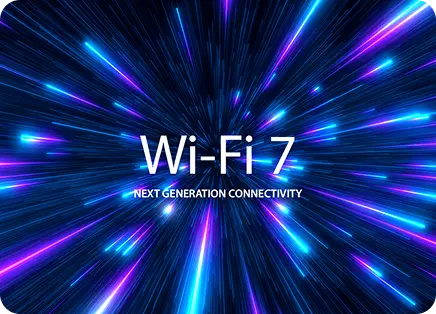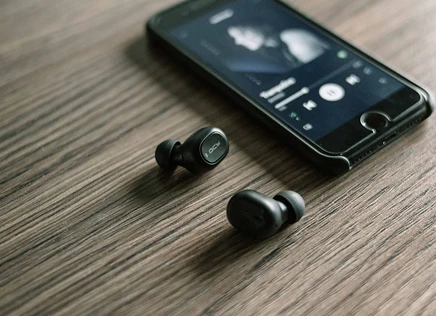
Wi-Fi 7 Released
The new Wi-Fi 7 standard is finally here. Shortly before CES started, the Wi-Fi Alliance announced that Wi-Fi 7 is finally available which means products with the wireless technology will start becoming available.
Ubiquiti U7 Pro

Wi-Fi 7 Technology
Wi-Fi is an alliance of companies that specifies interoperability between devices. Wi-Fi technology is based on an IEEE standard, which in this case is 802.11be, the so called Extremely High Throughput (EHT) standard. 802.11be takes 802.11ax even further.
While you may see the crazy throughput of 46Gbps mentioned, realistic results will be less, but still impressive. At CES we saw one router and laptop showing around 4.8Gbps which is simply amazing when you realize most can’t achieve these speeds wired.
6GHz Band Support
In wireless, having a less congested band with less devices almost always means more throughput. As the 2.4GHz band got busy with everything and shared the band with Microwaves, Baby Monitors and other devices, 5GHz was increasingly used as an alternative. But over time even the 5GHz band became congested. The 6GHz is here to help alleviate congestion.
320MHz Bandwidth
Another limitation of the 2.4GHz band was that it provided only 80MHz of bandwidth, since that’s the maximum band size (from 2400MHz to 2483.5MHz). More bandwidth means more throughput. The 5Ghz band provided more bandwidth, but the 6GHz gives even more bandwidth for intensive applications.
More bandwidth means higher throughput, and Wi-Fi 7 enables 320MHz in the 6GHz which is double the data capacity
Multi-Link Operation (MLO)

With 2.4GHz, 5GHz and 6GHz bands, you would think we should be able to grab quite a bit of bandwidth. But typically access points would operate in separate bands. Wi-Fi 6 allowed operation in 5GHz or 2.4GHz for a link.
A great new capability in Wi-Fi 7 is Multi-Link operation, where multiple links are aggregated to achieve higher throughput, lower latency and higher reliability. It can also switch dynamically to achieve load balancing and low latency.
This lower latency uses the first available band for transmission instead of waiting for the current band to be available. This really cuts down on latency and makes much better use of the bands available for transmission.
With 2.4GHz, 5GHz and 6GHz bands, you would think we should be able to grab quite a bit of bandwidth. But typically access points would operate in separate bands. Wi-Fi 6 allowed operation in 5GHz or 2.4GHz for a link. A great new capability in Wi-Fi 7 is Multi-Link operation, where multiple links are aggregated to achieve higher throughput, lower latency and higher reliability.
4096 QAM – 4K QAM
To transmit digital data, one must modulate it. Quadrature Amplitude Modulation is a standard modulation that’s been used by many wireless standards. Wi-Fi 6 supported 1024 QAM which is basically 10bits per symbol. To get about 20% higher speed, Wi-Fi 7 supports 4096 QAM which enables 12bits per symbol.
Multi-RU Support
Subcarriers are grouped in resource units. While Wi-Fi 6 allowed a user to get one resource unit, Wi-Fi 7 allows a user to get multiple resource units, so that the throughput for that user can be increased

Multi-RU Support
Legacy devices can be a problem for next generation systems because they can interfere with getting the most out of the spectrum. A device occupying part of the spectrum essentially splits the spectrum into two, causing Wi-Fi 5 and older generations to be limited to only one piece of the spectrum, even though there’s more spectrum available. You were limited to the largest contiguous unused part of the channel.
Preamble Puncturing allows a Wi-Fi 6 and 7 devices to use what would have otherwise been wasted channels to increase performance. Wi-Fi 6 enabled Preamble Puncturing, but Wi-Fi 7 makes support for it almost mandatory.
More Spatial Streams
MU-MIMO or Multi User MIMO is increased, allowing up to 16 x 16 streams. In practice most systems support less than 8, but some higher end systems supported 8 and now they can support up to 16. Wireless router and devices that will take advantage of this are likely to be rare due to the high cost of supporting so many streams and having so many antennas.







